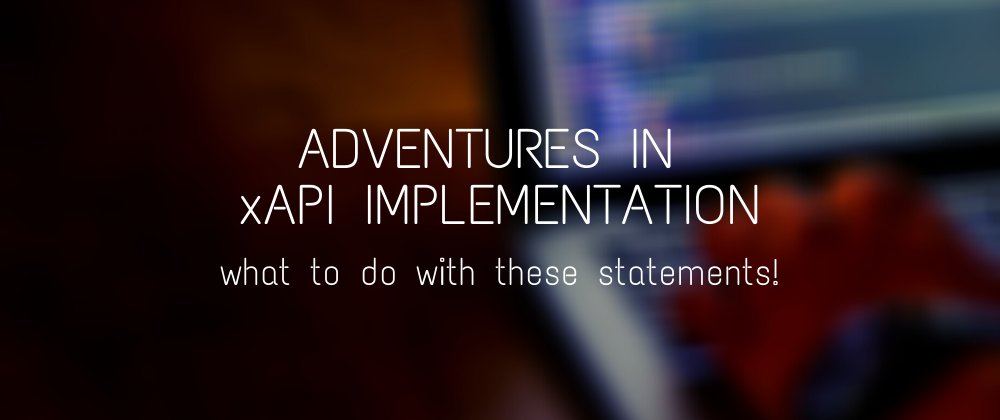This is the third post in my "Adventures in xAPI Implementation" series. If you're just joining us, feel free to take a look at the previous two posts to get caught up!
Let's Continue!
If you've been following this journey, then you know I'm now sending custom xAPI statements from my Storyline course, and in my case, those statements end up in our SCORM Cloud LRS. Not only that, but I'm doing it without having to modify any of Storyline's output files - no additional wrapper or anything. This makes it so much easier to start sending more custom statements, but what's the point?
The "point", as points tend to be, will be different for everyone. That's part of the reason I want to share some of the things I will be doing with statements, and maybe that can help some of you out there in your efforts to provide more in-depth learning analysis or to improve the quality of your courses! I'll dive deeper into how exactly you can accomplish these in subsequent posts, but for now, here's a couple of ideas on what to do with the xAPI statements in your LRS.
1. Visualize that data!
Now, if you're only using SCORM Cloud, this one will take a little more work, as they do not seem to provide a way to pull a .csv of your data any more, but many other LRSs will give you this option. In my case, I've set up a LearningLocker instance on AWS that all our SCORM Cloud statements forward to. LearningLocker does allow me to pull a .csv, and once I have that, I can pull the data into PowerBI to create interesting visualizations. To be fair, you can design some basic visualizations inside of LearningLocker itself, but it's a bit limited, so for any kind of advanced visualizations it's a lot easier to work inside PowerBI or some other visualization tool.
For me, this is huge, as I think data can tell a wonderful story when presented correctly - but if you show a stakeholder your LRS log, it's most likely going to cause more confusion than anything else.
2. Use it in your courses!
This part is wild. It's what originally attracted me to xAPI, but I faced numerous obstacles in order to make it work.
You can actually query the statements in your LRS and set a variable inside your Storyline course based on whether there is a match or not.
Think about that for a minute - say you want to know if someone has already taken another one of your courses, and if so, you want to eliminate some of the overlapping content in the course they are currently in. Maybe you want to provide more or less content depending on an already established competency level. Maybe you want to provide a reward when they complete a certain number of your courses.
These are all possible if you are sending the right statements, and then building your complimentary courses with that in mind.
Conclusion
So there's a little preview of what's coming up. Can't wait to hear what others are doing or wanting to do with their xAPI statements. In my next posts, I will get into how you can create these advanced visualizations and how to actually modify a learner's current course based on how they have interacted with your other courses.







Top comments (0)